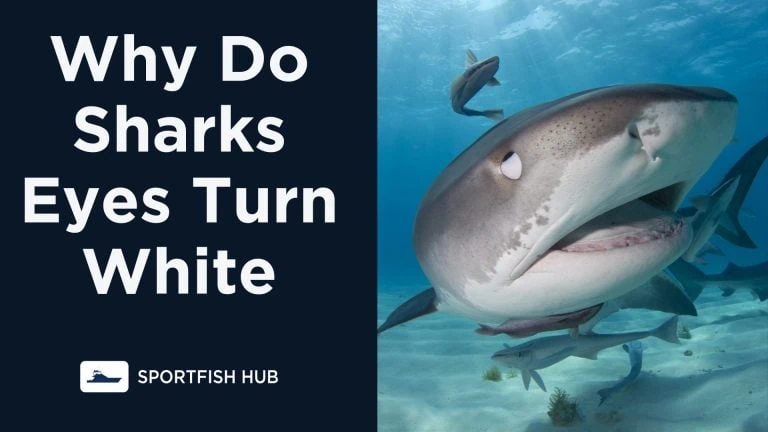Sharks evolved incredible adaptations over millions of years. One of the most fascinating shark adaptations is the apparent color change in their eyes that can occur during certain situations.
Sharks’ eyes can shift from their normal dark brown or black color to take on an eerie, ghostly white appearance. This strange phenomenon has captivated both scientists and ocean enthusiasts who want to understand what causes this creepy color change.
What Shark Eyes Normally Look Like
- Sharks have eyes that are structured very similarly to other vertebrates, with key components like a cornea, iris, lens and retina.
- The iris, or colored part of the shark’s eye, is a deep blue hue.
- Under normal conditions, the overall eye color of most shark species is a dark brown to black. The dark pigmentation helps protect the sensitive shark eye tissues from bright sunlight when hunting in illuminated ocean waters.
When and Why the Eyes Appear to Change Color
There are a few possible explanations for why sharks’ eyes may temporarily appear to shift from their normal dark color to a pale white:
- Protective Membrane
- Some shark species have a specialized third eyelid called a nictitating membrane that covers and shields their eyes.
- This transparent or translucent membrane can slide across the eye during potentially dangerous situations like capturing active prey or fighting.
- As the nictitating membrane slides over the eye, it can create the optical illusion that the shark’s eye color has suddenly changed from dark to white.
- Ocular Rotation
- Certain shark species like great white sharks are able to roll their eyes backwards into their socket in a protective reflex.
- Rolling the eyes back acts to shield their sensitive visual organs from potential damage during hunting or attack scenarios.
- When the eyes are fully rolled back, the visible portion of the eye socket appears white, even though the actual eye retains its normal color underneath.
- Reflective Layer
- An area called the tapetum lucidum located behind the retina helps reflect light back through the shark’s eye, improving their vision in low light ocean conditions.
- This reflective layer can also cause a glowing or eye shine effect, further contributing to the white eye illusion.
- Physiological Stress Response
- Sharks may undergo physiological changes like altered blood flow and pupil dilation when feeling threatened or entering “tonic immobility”—a trance-like defensive state.
- These automatic stress responses could potentially cause the shark’s eyes to seem to lighten in color temporarily.
Summary
The dramatic change to white shark eyes is an impressive evolutionary adaptation to protect their vital vision during hunting and dangerous situations. While the white eyes can look eerie, this phenomenon allows sharks to continue thriving as successful ocean predators. Understanding the reasons behind their change in eye color gives us a fascinating glimpse into the incredible survival tactics of sharks.












